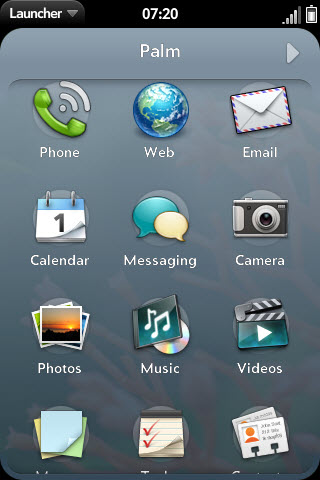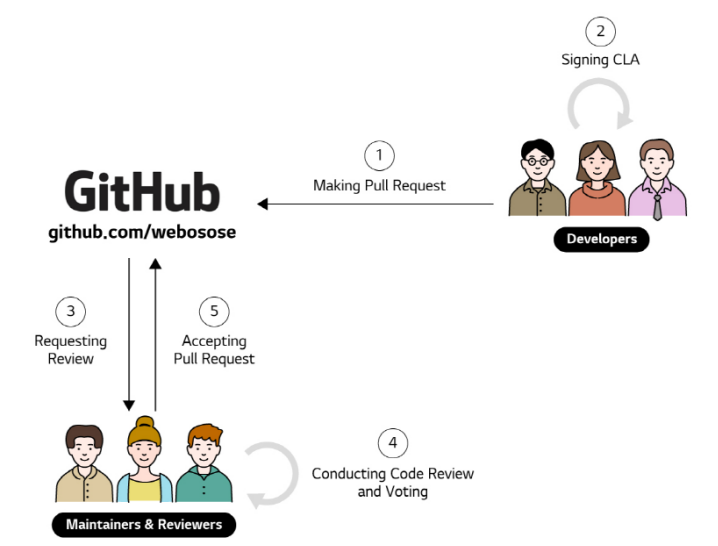LG Announces Open WebOS Open Source Edition
LG Electronics announced the availability of webOS Open Source Edition, aimed primarily at developers, allowing other companies to use it in their devices. This enables other companies to use webOS Open Source Edition in their products: televisions, IoT devices, tablets, or smartphones.

Version 1.0 of the new webOS OSE is optimized for the Raspberry Pi 3, but support for new platforms is just around the corner. The setup page contains instructions for assembling the firmware for downloading from a microSD card. To build, you need Ubuntu 14.04 LTS 64-bit, a 4-core Intel Core i5 processor, 8 GiB RAM and 100 GiB of disk space.
Background
Palm first introduced webOS in January 2009 at CES in Las Vegas. The new Linux kernel-based operating system was intended for the Palm Pre smartphone and was called Palm webOS .
In April 2010, Hewlett-Packard bought Palm along with webOS for $ 1.2 billion. Initially, HP nurtured ambitious plans to use webOS as a universal platform for all embedded devices and printers, to the detriment of Windows. Many remember the HP TouchPad on webOS 3.0.
Then something went wrong and at Hewlett-Packard it was decided to open the webOS source code , refusing to further promote products with this OS. The new open source operating system was simply called Open webOS .
LG Electronics acquired HP source codes and all related assets related to webOS five years ago. For several years, LG Electronics used the operating system in smart TV and various IoT devices.
On September 1, 2014, the first version of LuneOS , an Open webOS fork , was released, as LG developed the webOS platform behind closed doors, unlike Open webOS as part of an open project in the bowels of HP.
Specifications
Over time, LG realized all the benefits of developing an open source mobile operating system by posting a project with all the latest developments under the open source Apache 2.0 license.

The development management model is quite in the spirit of projects of this kind - maintainers at the top, ordinary developers at the bottom, the community puts forward both of them, according to everyone's contribution to the common cause.

The main repository is build-webosbased on the OpenEmbedded package build infrastructure . The assembly also uses a set of program interfaces [1] and a collection of Yocto metadata .
The peculiarity of webOS is that web technologies are enough for application development . In this regard, webOS OSE is consistent with its heritage; the toolkit of the application developer consists of HTML5, CSS and Enact [3] .
Base component set
LS2 APIto register and call the interfaces required by applications and system services.- Involved a new composite manager based on the Wayland protocol.
- Systemd system manager with bootloader
bootdand sound serverpulseaudio. - Unlike Open webOS , the new version uses Chromium 53. Integration with Wayland is done through updating the compatibility module
Ozone. - DB8 - data storage in JSON format, uses as a backend
LevelDB.
User interface
WebOS OSE is built on Qt 5.6 and Blink, [2] replacing WebKit. The new version was SysMgrdivided into two modules: SAMand LSM. Some system applications are written using QML, for example, Уведомленияand Home Launcher.
Service management
- Added support for localization
i18n. uMediaServer- Provides media player interface, access rights and resource management.System Application Manager- Manages applications and system services.Luna Surface Manager- Interaction of the system with the user.
Used materials
- webOS Open Source Edition :: Architecture
- Open source version of webOS launches with smart device focus
- LG has published the webOS Open Source Edition operating system
Notes
- Both projects are used to create distributions with embedded Linux OS. ↑
- Open engine for web browser. ↑
- Integrated software package based on React libraries. ↑
